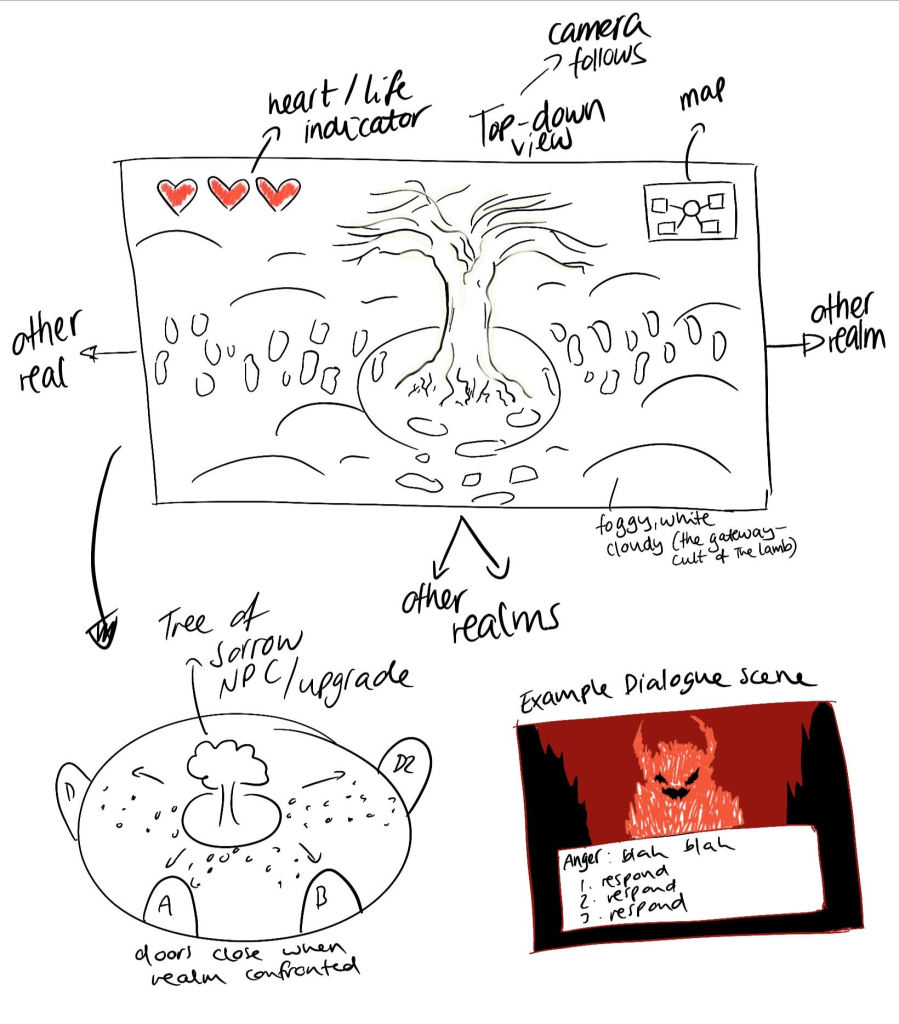Lament is a top-down roguelite with a hack and slash combat system. Its core gameloop is inspired by both the crusades in Cult of The Lamb and the escape attempts in Hades.
Lament is designed to take players through a profound, introspective experience. As the protagonist moves through each realm, they not only battle external manifestations of their grief but also encounter moments of insight, allowing them to reflect on the memories and love that connect them to what they’ve lost. The journey is a slow, emotional process, encouraging players to think deeply about loss and healing.
Ultimately, Lament is more than a game; it’s a story about resilience, love, and the process of letting go. Through visually rich environments, challenging gameplay, and a storyline that explores one of humanity’s most universal experiences, this game offers players a meaningful journey that echoes beyond the screen. It’s an invitation to explore, to reflect, and perhaps, to heal.
Prepare to step into the stages of grief, to confront loss head-on, and to emerge on the other side with a sense of peace and understanding.
Perspective/Scene Layout

Player Objective
The end goal is to confront all the stages of grief. The player does this by progressing through a series of rooms, overcoming bosses (Griefs) and upgrading to become stronger. By confronting and overcoming all of the Griefs and their realms, the player will achieve Acceptance and restore peace.
Flow and Experience
Below is a flowchart that depicts how the game unfolds.

Core Gameplay
The game loop diagram below represents second-to-second core gameplay inside of the realms. It shows dying as an integral part of the game, keeping true to the roguelite genre.

Aligning Mechanics with Themes
It’s important that this document is purposeful in its use of language when referring to combat elements, this is because Lament is a game about death and grief. Using specific language shapes the tone, intent, and message of the game. In a sensitive narrative, where the protagonist is navigating the stages of grief, the words chosen influence how players perceive the journey and its deeper emotional layers.
In a game about death and loss, the core experience isn’t about violence or destruction – it’s about emotional growth and resolution.
Using terms like “confront” emphasises the symbolic nature of the enemies as manifestations of grief or internal struggles, rather than physical beings to be eliminated. It aligns the mechanics with the story’s intent, ensuring players view these encounters as steps in the protagonist’s emotional journey rather than typical combat.
For instance, confronting the embodiment of Anger suggests facing and understanding one’s rage, while killing it suggests eradication, which doesn’t resonate with the healing process that Lament and grief itself entails.
Leave a Reply